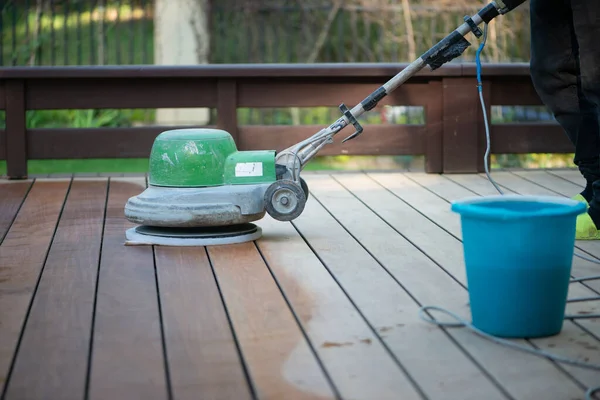Top 5 Deck Repair Tips Every Melbourne Homeowner Needs To Know
Decks are a quintessential part of many Melbourne homes, providing an outdoor space for relaxation, entertainment, and enjoying the beautiful weather. However, over time, decks can succumb to wear and tear, requiring repairs to maintain their functionality and safety. Whether you're dealing with loose boards, rotting wood, or wobbly railings, knowing how to effectively repair your deck is crucial. In this article, we'll discuss the top five deck repair tips every Melbourne homeowner needs to know.
Regular Inspection and Maintenance
Regular inspection and maintenance are key to preventing minor issues from escalating into major problems. Make it a habit to inspect your deck at least once a year, preferably before the start of the outdoor entertaining season. Look for signs of damage such as loose or protruding nails, cracked or warped boards, and any areas of rot or decay. Pay special attention to areas where the deck comes into contact with the ground or where water tends to pool, as these are common trouble spots.

Addressing Structural Issues
Prompt Action:
Prompt action is essential when addressing structural issues with your deck. Any signs of sagging beams or wobbly support posts should be addressed immediately to prevent further deterioration and ensure the safety of the deck for you and your family. Ignoring these issues can lead to more extensive damage and potentially dangerous situations. Therefore, scheduling a professional inspection as soon as possible is highly recommended to accurately assess the problem and implement the necessary repair measures.
Professional Consultation:
Seeking professional consultation is crucial when dealing with structural issues on your deck. A qualified professional can provide an accurate assessment of the damage and recommend the most effective repair solutions. Their expertise ensures that the repairs are conducted safely and in compliance with relevant building codes and regulations. By consulting with a professional, you can have peace of mind knowing that your deck will be restored to its optimal condition.
Reinforcement or Replacement:
Determining whether reinforcement or replacement is necessary for structural issues on your deck is essential. Reinforcement may suffice for minor damage, strengthening weakened components to restore stability. However, in cases of severe deterioration, replacement may be the safest and most effective solution to ensure the long-term integrity of the deck. Consulting with a professional like deckseal.com.au will help you make an informed decision based on the extent of the damage and the overall condition of your deck.
Dealing with Rot and Decay
- Thorough Inspection: Start by conducting a thorough inspection of the affected areas to identify any signs of rot or decay, including soft or discolored wood.
- Removal of Damaged Wood: Remove any rotted or decayed wood using appropriate tools such as a chisel or saw, ensuring to cut back to healthy wood to prevent further spread of the decay.
- Application of Wood Filler or Epoxy: Fill in any gaps or holes left by the removal of damaged wood using a high-quality wood filler or epoxy resin, following the manufacturer's instructions for proper application and drying.
- Surface Smoothing and Sealing: Once the filler or epoxy has dried, sand the surface smooth to create a seamless finish, then apply a waterproof sealant or stain to protect the repaired area from moisture and prevent future decay.
Tightening Loose Fasteners
Comprehensive Inspection:
A comprehensive inspection of your deck involves a thorough assessment of its structural integrity and overall condition. This includes examining for signs of wear, damage, or deterioration in deck boards, support beams, and fasteners. Look for loose or protruding nails, cracks, or warping in the wood, and any areas of rot or decay. By conducting such an inspection regularly, you can identify potential issues early and take proactive measures to maintain the safety and longevity of your deck.
Tightening or Replacement:
When addressing loose fasteners on your deck, determining whether to tighten or replace them is crucial. Tightening may suffice for mildly loose fasteners, restoring structural stability with minimal effort. However, if fasteners are stripped or corroded beyond repair, replacement is necessary to ensure the deck's safety and longevity. Balancing cost-effectiveness and safety considerations is key when making this decision, prioritizing the structural integrity of your deck for long-term enjoyment.
Protecting Against Moisture and Rot
Application of Waterproof Sealant or Stain:

Applying a waterproof sealant or stain to your deck's wood surface is essential for protecting against moisture damage and rot. This protective coating forms a barrier that prevents water from seeping into the wood fibers, reducing the risk of decay and prolonging the deck's lifespan. Prior to application, ensure the surface is clean and dry, and follow the manufacturer's instructions for proper application techniques. Regularly maintaining and reapplying the sealant or stain as needed will help preserve the beauty and integrity of your deck for years to come.
Regular Maintenance and Reapplication:
Regular maintenance and reapplication of sealant or stain are vital for ensuring long-term protection against moisture and rot on your deck. Inspect the deck annually for signs of wear or damage to the coating, such as fading or peeling. Reapply the sealant or stain as needed, typically every 1-3 years, following the manufacturer's recommendations for preparation and application. By staying proactive with maintenance, you can safeguard your deck's structural integrity and aesthetic appeal for years of enjoyment.

